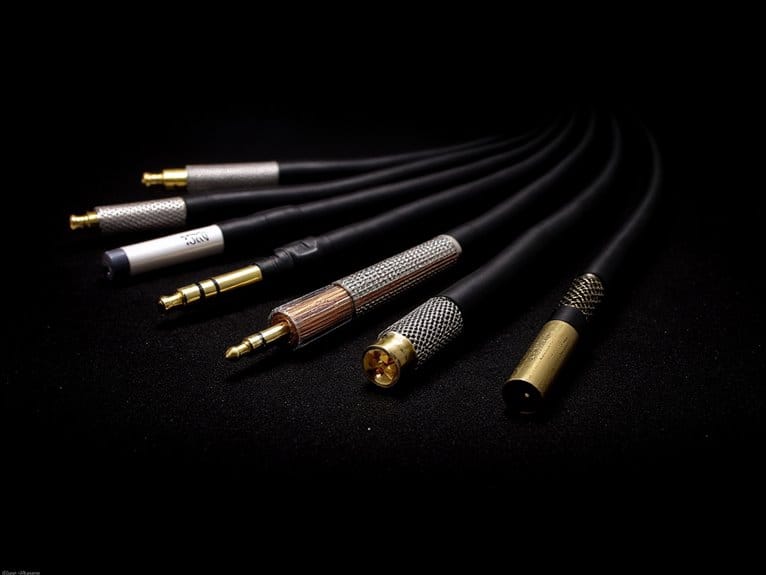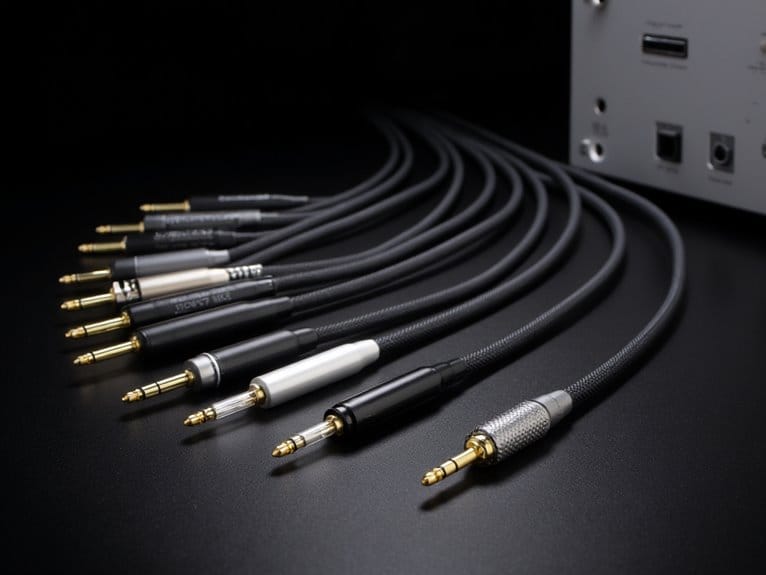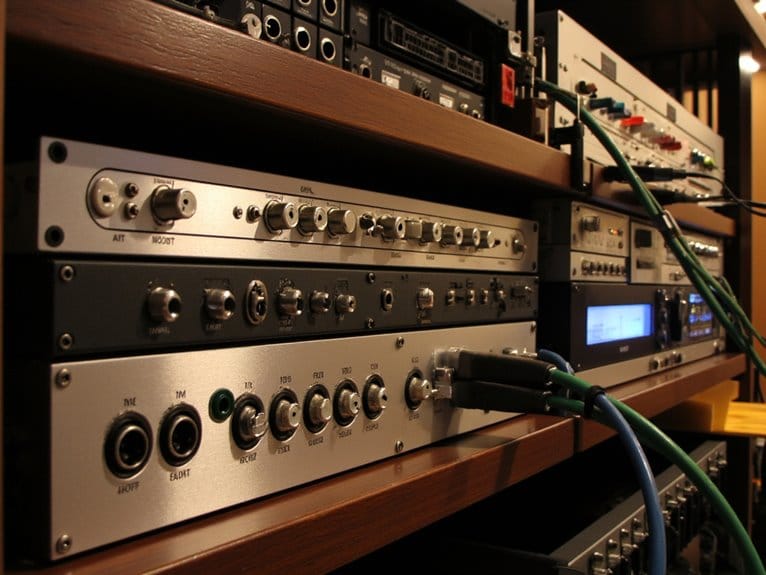Balanced Vs. Unbalanced Connections: When and Why to Use Each
Balanced and unbalanced connections play a significant role in audio setups, but did you know that the decision between the two can greatly impact the quality of your sound output? Understanding when and why to use each type is important for audio professionals and enthusiasts alike. Knowing the nuances can lead to a more optimized audio experience, but the real question remains: which connection type is the best fit for your specific needs and how can you make an informed choice?
We are supported by our audience. When you purchase through links on our site, we may earn an affiliate commission, at no extra cost for you. Learn more.
Key Differences Between Balanced and Unbalanced
Balanced and unbalanced connections exhibit distinct characteristics in their design and functionality, important for understanding best cable selection in audio setups. In audio applications, cables play a critical role in transmitting signals effectively while minimizing noise and interference. Balanced cables, such as XLR and TRS cables, utilize three conductors to carry the audio signal: two for the signal (positive and negative) and one for the ground. This design helps reduce noise by sending two identical signals with opposite polarities, allowing the receiving equipment to cancel out any interference picked up along the way.
On the other hand, unbalanced cables only have two conductors – one for the signal and one for the ground. This simplicity makes them more susceptible to interference, especially over longer distances. Unbalanced cables, like TS guitar cables and RCA cables, are commonly used in consumer setups where shorter cable runs are typical. Due to their design, unbalanced cables are prone to picking up noise, which can degrade the signal integrity, making them less suitable for professional audio applications.
Understanding the differences between balanced and unbalanced cables is critical for maintaining signal quality and integrity in audio setups. By choosing the right cable type based on the specific requirements and environmental factors, one can ensure optimal audio transmission with minimal interference.
Benefits of Balanced Connections
In audio engineering, the unparalleled effectiveness of balanced connections lies in their exceptional noise rejection capabilities. When it comes to transmitting audio signals, the benefits of using balanced cables are important for maintaining pristine audio quality. Here are three key advantages of balanced connections:
- Noise Rejection: Balanced connections excel at rejecting interference from electromagnetic and radio frequency sources. This feature is essential in environments where various devices can introduce unwanted signals into the audio path. By utilizing balanced cables, interference from sources like AC mains, fluorescent lights, motors, and cell phones is effectively minimized, ensuring a clean audio signal free from disturbances.
- Suitability for Professional Applications: Balanced connections are important for transmitting both microphone level signals and maintaining professional line level applications. Whether in studio settings, live events, or other professional audio environments, the use of balanced cables helps deliver consistent and reliable signal transmission.
- Noise Immunity for Buzz-Free Audio: One of the most significant benefits of balanced connections is their noise immunity, which results in buzz-free audio transmission. Professionals prefer using balanced cables due to their noise-canceling properties, which contribute to achieving high-quality sound reproduction without unwanted distractions.
Advantages of Unbalanced Connections
Unbalanced connections offer a straightforward and cost-effective solution for audio signal transmission, particularly suited for consumer audio devices and shorter cable lengths. They are easy to use and widely compatible with a variety of consumer audio equipment, making them a popular choice for home audio setups such as connecting turntables to amplifiers. Common plug types for unbalanced connections include RCA, 1/4-inch TS jacks, and 3.5mm TRS jacks, providing versatility in connecting different devices.
The cost-effectiveness of unbalanced connections is evident when contemplating the affordability of the cables and equipment needed for such setups. Additionally, for short cable lengths typically found in home audio systems, unbalanced connections can provide a simple and efficient solution without the need for more complex balanced setups.
However, it is important to note that unbalanced connections are more prone to interference and noise compared to balanced connections. This susceptibility to outside interference is a trade-off for the simplicity and cost-effectiveness that unbalanced connections offer. when setting up audio systems where interference and noise could be a concern, it may be advisable to consider the advantages of balanced connections, which provide better noise rejection capabilities.
When to Choose Balanced Over Unbalanced
Considering the signal integrity and potential noise interference, the choice between balanced and unbalanced connections hinges on the specific application requirements and equipment in use. When opting for balanced over unbalanced connections, several key factors come into play:
- Noise Reduction: Balanced cables are preferred for long-distance connections due to their ability to reduce noise interference to a significant extent. This is vital in professional audio setups where maintaining signal integrity is paramount.
- Common-Mode Rejection: Balanced cables utilize differential signaling to cancel out common-mode noise, ensuring cleaner transmission of analog audio signals. This feature is especially beneficial in environments with high electromagnetic interference.
- Professional Audio Requirements: In scenarios such as studios or live sound settings, where high-quality audio transmission is essential, opting for balanced connections is the norm. These environments demand the robust noise rejection capabilities that balanced cables provide, enhancing overall audio fidelity.
Practical Applications for Each Connection Type
For best audio performance in various settings, understanding the practical applications for each type of connection is essential. When dealing with long cable runs or environments with high electromagnetic interference, it is advisable to use balanced cables. These cables have a distinct advantage over unbalanced cables in minimizing noise along the signal wire. In professional audio settings like studios, live sound setups, and installations, where maintaining pristine audio quality is paramount, balanced connections are essential. The design of balanced cables allows them to reduce noise by using two signal conductors and a separate ground, enabling the system to reject any interference that may be picked up along the cable.
On the other hand, unbalanced connections are commonly found in consumer audio devices and are suitable for short cable lengths where noise interference is not a significant concern. Unbalanced cables are simpler in construction and more cost-effective, making them widely compatible with various audio equipment. While they may not provide the same level of noise rejection as balanced cables, unbalanced connections are sufficient for everyday audio setups where the cable lengths are short, and the risk of interference is minimal. Understanding the difference between these two types of connections and their practical applications is vital in ensuring the best audio quality based on the specific requirements of the audio system in use.







